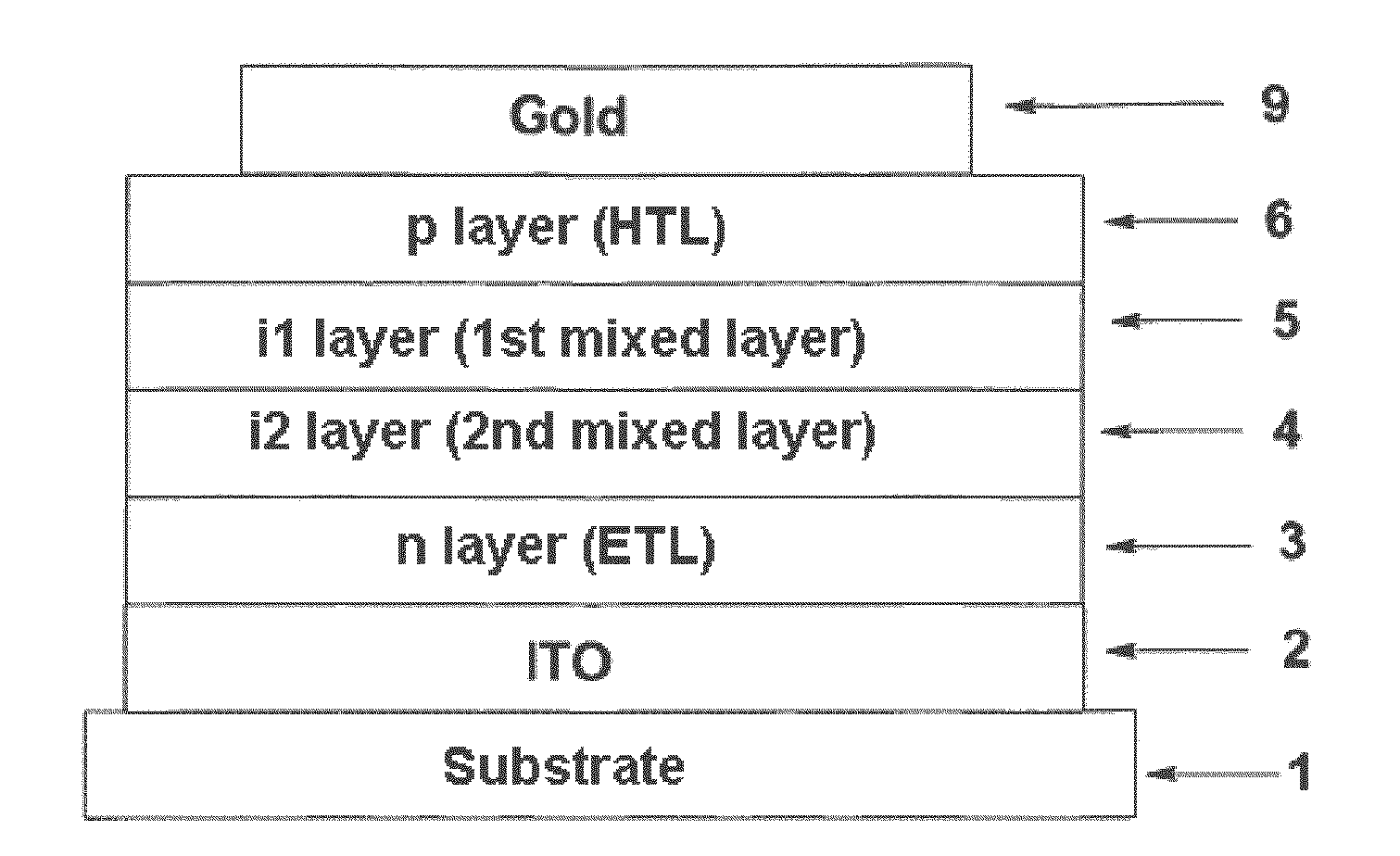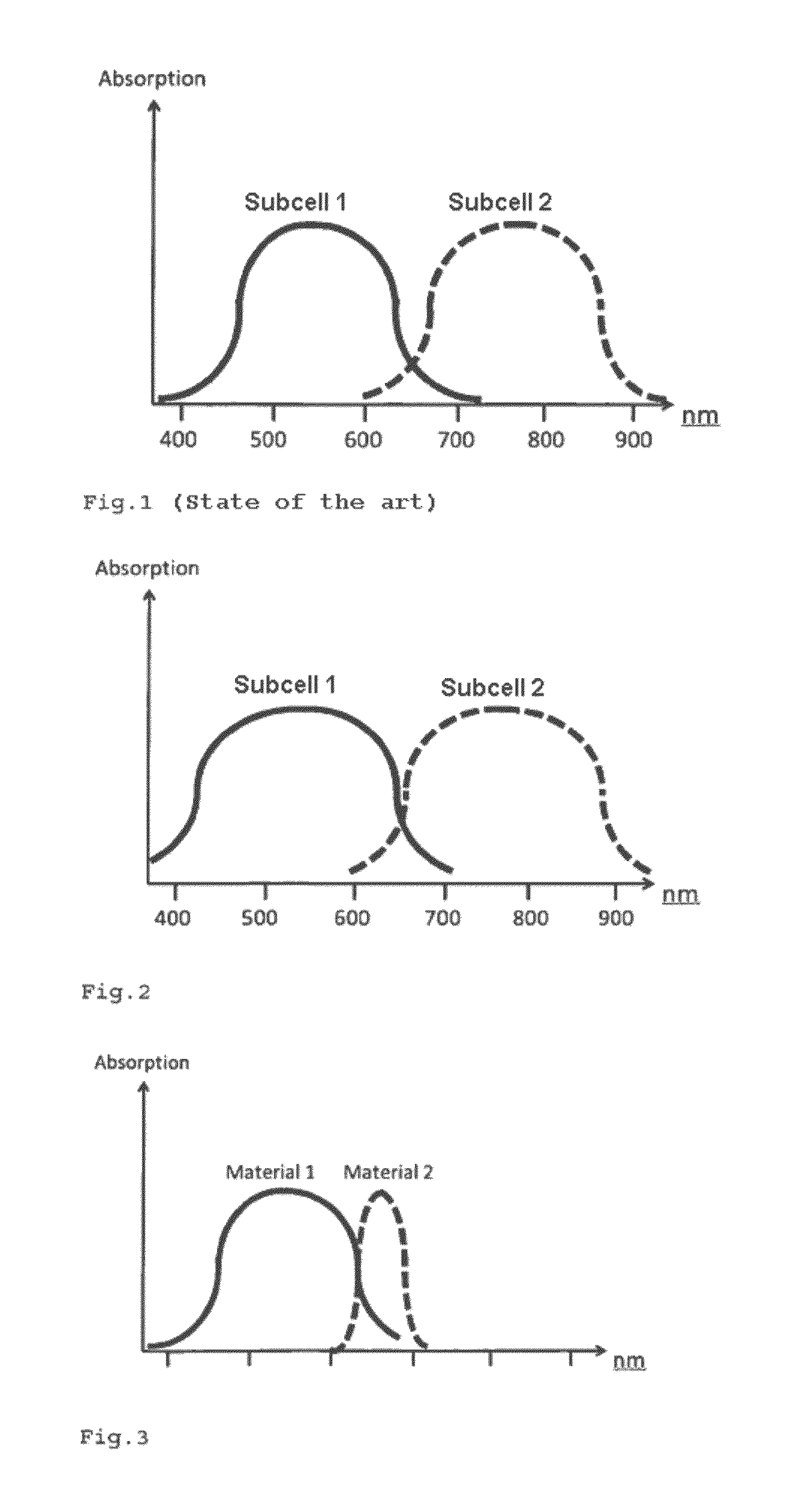Photoactive Component Comprising Organic Layers
a technology of organic layers and components, applied in the direction of material nanotechnology, semiconductor devices, electrical devices, etc., can solve the problems of inability to use monocrystalline organic materials, inability to achieve multiple layers with sufficient structural perfection, and inability to achieve the highest efficiencies of 6-7% achieved to date in the laboratory
- Summary
- Abstract
- Description
- Claims
- Application Information
AI Technical Summary
Benefits of technology
Problems solved by technology
Method used
Image
Examples
Embodiment Construction
[0037]The inventive component, which takes the form of a single, tandem or multiple cell, has two electrodes, one electrode being arranged on a substrate and one as a top counterelectrode. Between the electrodes is a photoactive acceptor-donor layer system as an absorber system, which has at least three absorber materials. At least two absorber materials are donors or acceptors, one of the two absorber materials which take the form of donors or acceptors absorbing at greater wavelengths than the other absorber material, and one of the two absorber materials having a smaller Stokes shift and / or a smaller absorption width than the other absorber material.
[0038]The Stokes shift is defined in the context of the invention as the distance in nm between the maximum absorption and the maximum photoluminescence.
[0039]A donor refers to a material which releases electrons. An acceptor refers to a material which absorbs electrons.
[0040]Absorber materials are understood to mean materials which a...
PUM
 Login to View More
Login to View More Abstract
Description
Claims
Application Information
 Login to View More
Login to View More - R&D
- Intellectual Property
- Life Sciences
- Materials
- Tech Scout
- Unparalleled Data Quality
- Higher Quality Content
- 60% Fewer Hallucinations
Browse by: Latest US Patents, China's latest patents, Technical Efficacy Thesaurus, Application Domain, Technology Topic, Popular Technical Reports.
© 2025 PatSnap. All rights reserved.Legal|Privacy policy|Modern Slavery Act Transparency Statement|Sitemap|About US| Contact US: help@patsnap.com



